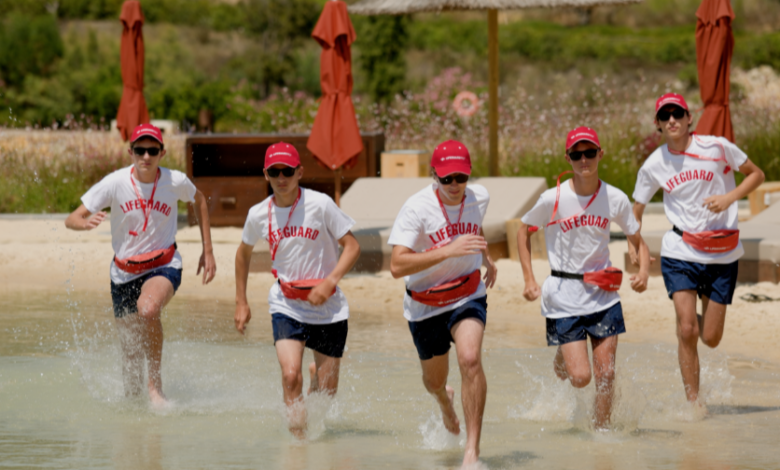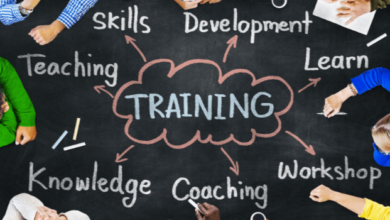Essential Technical Aspects for Protecting Waters as a Professional Lifeguard

Training as a lifesaver requires much more than being an excellent swimmer; along with that, it needs serious training and quick instincts to understand water safety precautions. In any case, if you take up lifeguarding as your career or want to enhance your skills, the very first step is to enroll yourself on lifeguard classes, where you gain a technical understanding of this line of work.
We have cited the ways herein above the very important technical skills and knowledge required to prove effective protection for swimmers from drowning. Besides, the need for complete training is made clear, like the programs offered by the American Lifeguard Association, the most significant organization in lifeguard certification.
Why Lifeguard Classes Are Essential
Lifeguarding is a kind of job highly specific and requires formal training. What covers, from rescue to emergency medical response, brings lifeguards into a position prepared for the most unusual situations. Certification through the American Lifeguard Association, a body nationally accepted, provides the lifeguard with skills meant to keep drownings at bay and respond to emergencies.
The strongest swimmers might even have the most devastating results if they jump straight into a real-life rescue scenario without the benefit of formal training. Some of the most important technical skills, taught in structured courses, include:
- Surveillance and Scanning Techniques
- Water Rescue Methods
- First Aid and CPR
- Use of Lifeguarding Equipment
- Emergency Action Plans
So let’s dive deeper into each of these aspects:
Surveillance and Scanning Techniques
A lifeguard’s primary role is to prevent accidents. Active surveillance requires:
Active vs. Passive Scanning
- Active Scanning: The lifeguard scans their entire zone systematically with an eye open for signs of distress.
- Passive Scanning: Scanning occasionally the area with no structured pattern (less effective).
The Protection Standard 10/20
This says that the lifeguard shall scan his zone completely every 10 seconds and be able to reach any victim within 20 seconds. “The proper lifeguard classes teach this technique so that no swimmer is left unnoticed.
Distress versus Drowning Recognition
All around the world, drowning is of course contrary, but it is a scream otherwise. So a lifeguard must recognize things such as:
- Head thrown back with mouth open
- Arms pressed down in climbing action
- Eyes glassy or closed
Such detection methods are emphasized in training programs, such as by the American Lifeguard Association.
First Aid and CPR
Lifeguards often act as the first responders to medical emergencies. Important skills include:
Cardiopulmonary Resuscitation (CPR)-
- Chest compressions and rescue breaths for cardiac arrest victims.
- AED (Automated External Defibrillator) use.
First Aid for common injuries-
- Spinal Injuries: Stabilizing the injured victim to minimize chances of becoming paralyzed.
- Bleeding Control: Applying pressure, sprinkling antiseptic, and bandaging.
- Heat-Related Illnesses: Recognition and treatment of heatstroke and dehydration.
Courses for lifeguards with reputable organizations such as the American Lifeguard Association ensure that lifeguards will be familiar with the most recent trends in CPR and first aid.
Equipment Knowledge in Lifeguarding
Professional lifeguards count upon specialized equipment that will allow them to execute rescues as efficiently as possible. Some of the important equipment includes:
Rescue Tubes
A buoyant device that provides support to the victims during water rescues.
Backboard
Used for stabilization of suspected spinal injuries and extrication from water.
Automated external defibrillators (AEDs)
Essential for resuscitating victims of sudden cardiac arrest.
Rescue Boards and Boats
Fast-response vessels are used in open waters.
Proper training allows lifeguards to use the equipment effectively and quickly.
Emergency Action Plans (EAPs)
All aquatic facilities need the emergency action plan (EAP) that describes procedures for a variety of emergencies, including;
- Drowning
- Spinal injury
- Severe weather evacuation
- Abduction of a child
Lifeguards should also be regularly practicing the action plan to ensure coordination and response against the emergence.
Read more: A Guide to Insurance
The American Lifeguard Association’s Role in Training
American Lifeguard Association, a leading lifeguard certification provider, provides lifeguard training courses that conform to industry standards and cover all technical matters mentioned above. When an applicant takes courses with the American Lifeguard Association, he or she learns by doing:
- In-water rescue drills
- CPR and first aid simulations
- Team emergency scenarios
ALA-certified lifeguards are graduates with a high degree of employability because they have constructive training for dealing with real situations and challenges.
Final Word
To protect a swimmer: vigilance, technical knowledge, and the ability to make tough decisions quickly. You must have some level of training, and the type may vary depending on whether one is working in a pool, beach, or waterpark. The American Lifeguard Association is among many organizations that provide the best lifeguard training that prepares lifeguards in the field excellently.
If you have serious ambitions of being a lifeguard, get into training that is worth its weight in gold, because skills acquired here can make a difference between life and death.
So, what are you waiting for? Enroll in a lifeguard certification course today and begin the step toward becoming a professional lifeguard!





